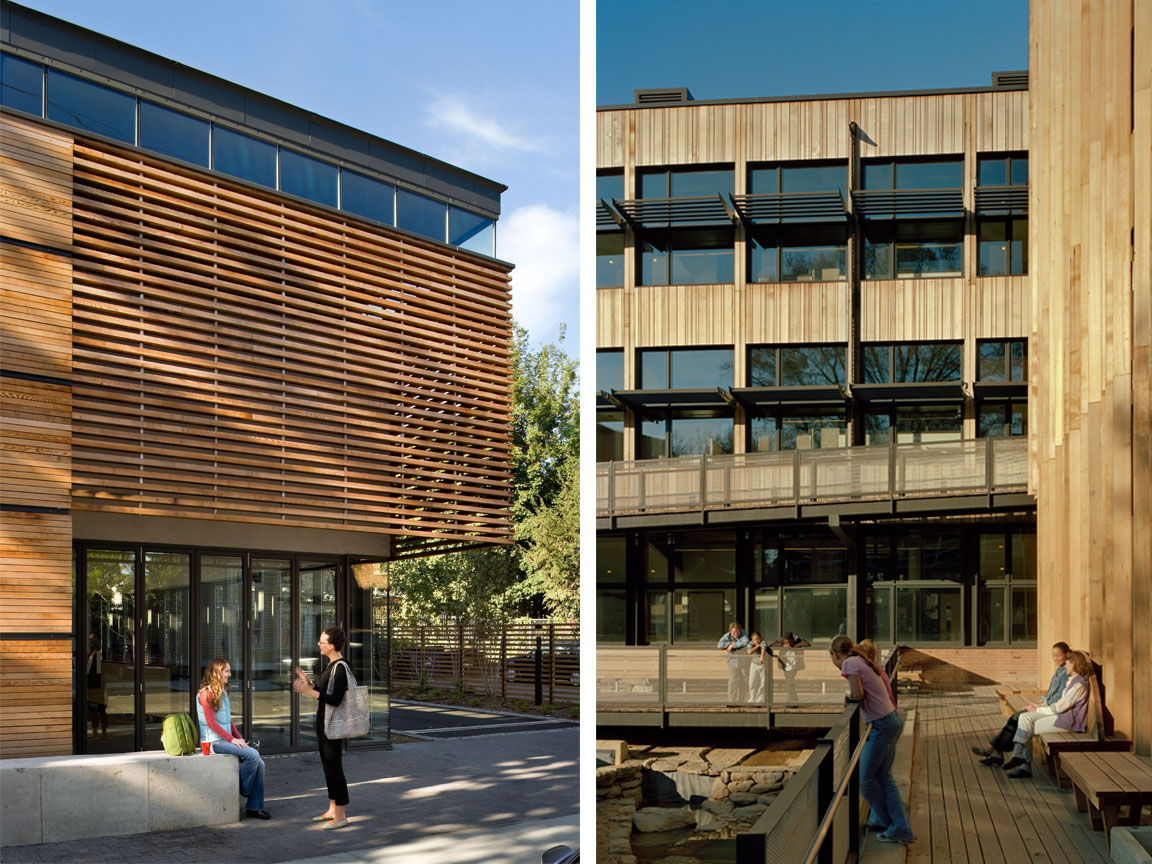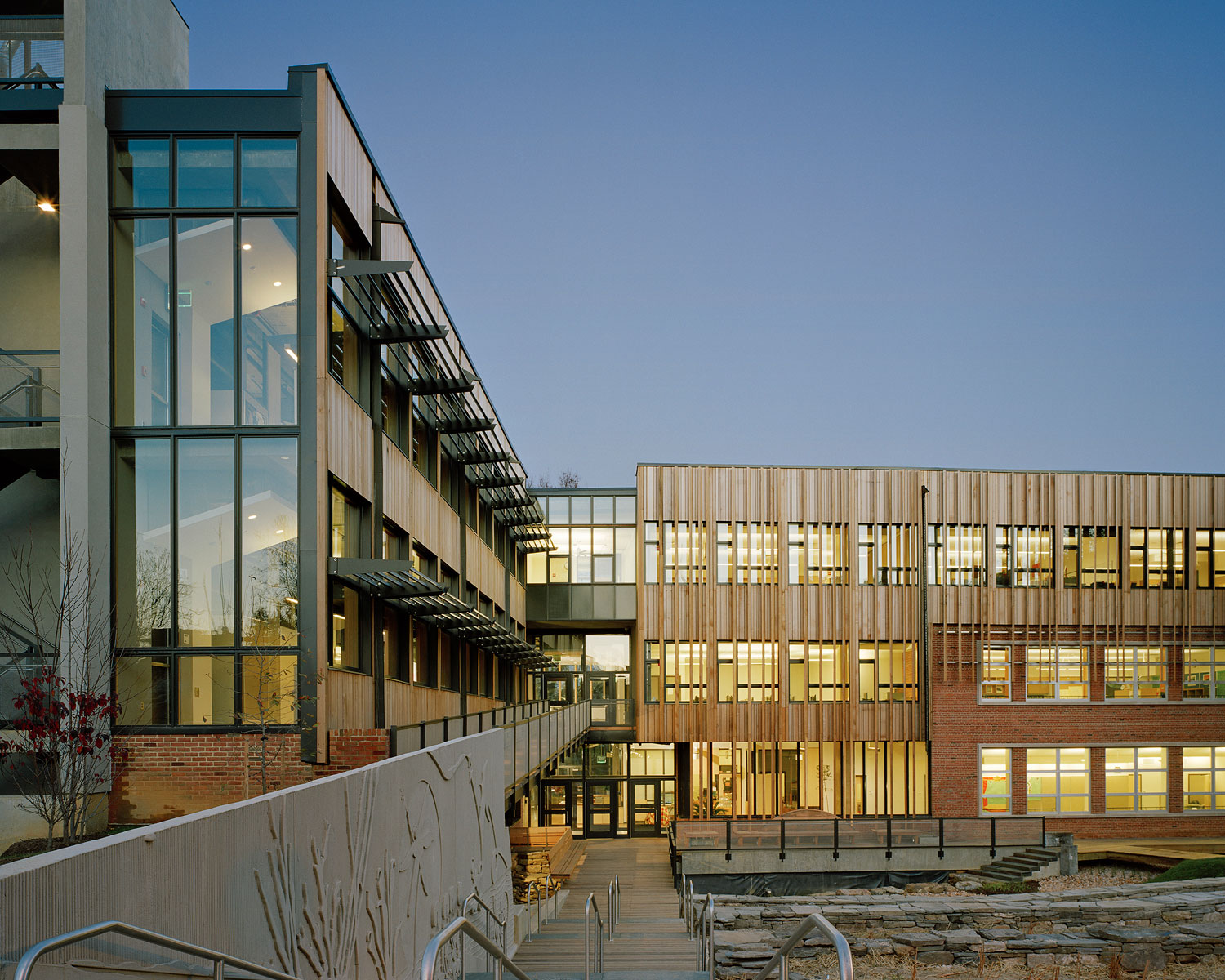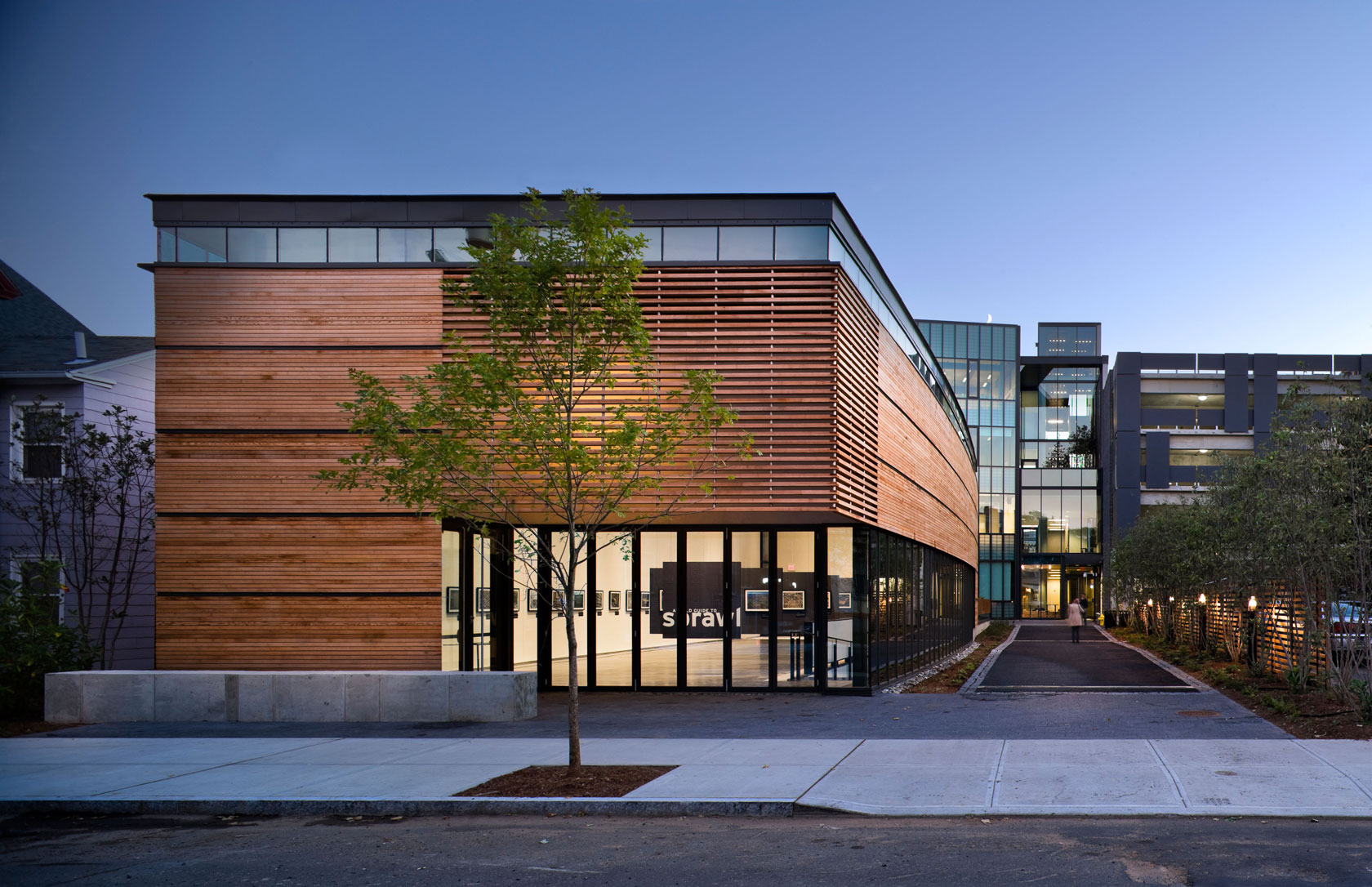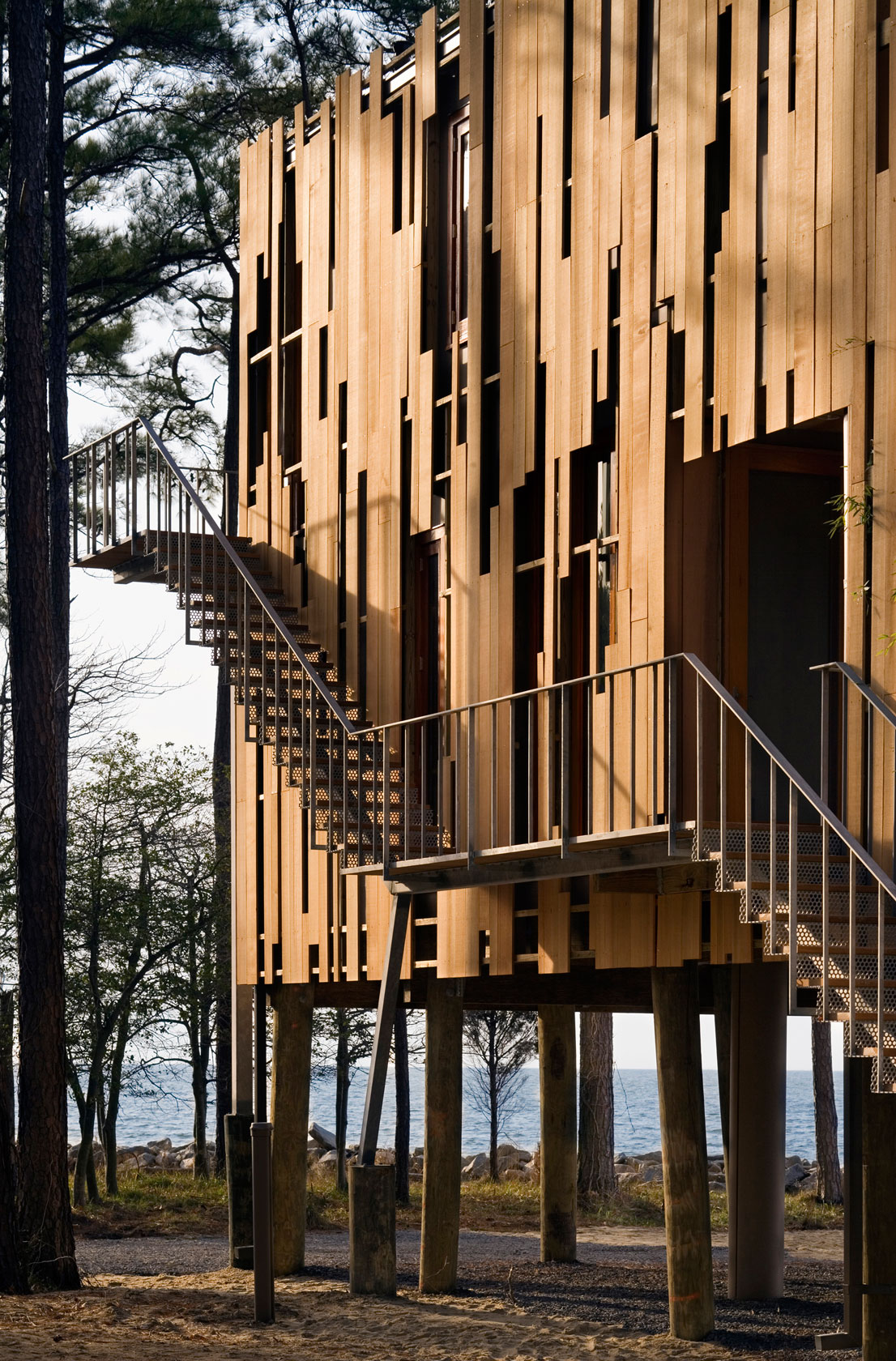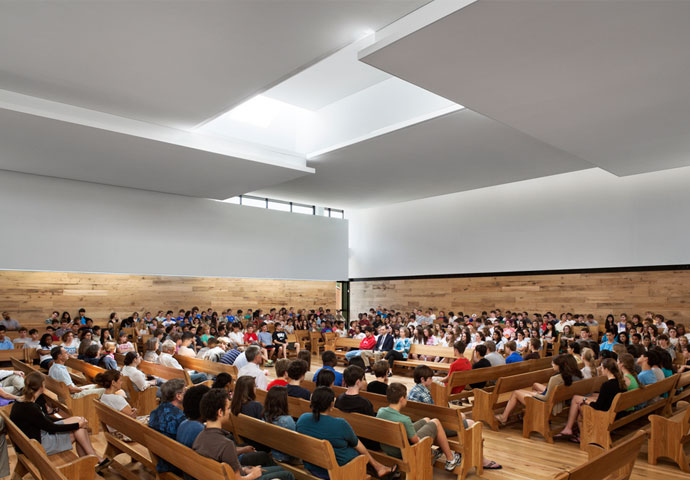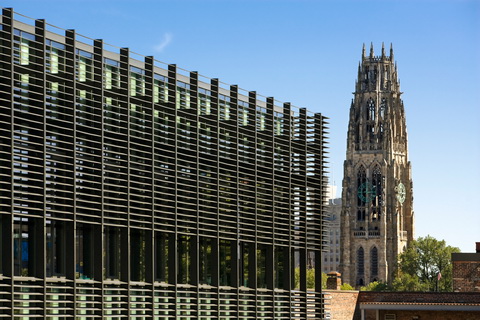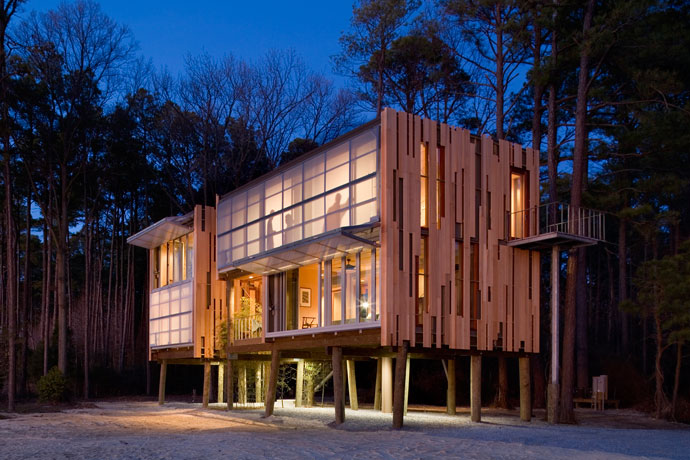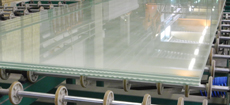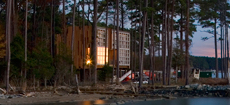The Long-Term Beauty of Untreated Western Red Cedar
Yale School of Art Gallery and Sidwell Friends Middle School both use western red cedar cladding that was left untreated.
© Peter Aaron/Esto (left) and © Halkin Photography LLC (right)
It was announced last month that the Yale School of Art Gallery and Sidwell Friends Middle School received 2008 Western Red Cedar Architectural Design Awards, presented by The Western Red Cedar Lumber Association and The Cedar Shake and Shingle Bureau.
Three of our recent projects make use of western red cedar as a cladding material: Sidwell Friends Middle School, Loblolly House, and the Yale School of Art Gallery. Its varied applications are appropriate to the unique site and program circumstances for each project.
Because of the variety of weathering conditions based on geography, site location, orientation of building elevations, and variable responses between wood specimens even within the same species, it is often difficult to predict the long-term visual appearance of cedar cladding. But based on our research, we were able to determine that careful detailing can insure the maximum longevity and predictable appearance of the cladding.
A study of the natural characteristics of the material, available water-repellents and preservatives, and detailing strategies led us to leave the cedar untreated in each instance. We were also able to advance the sustainable agendas for Yale and Sidwell by sourcing very high-grade reclaimed cedar from salvaged wine fermentation barrels.
Sidwell Friends Middle School
© Halkin Photography LLC
At Sidwell Friends Middle School, reclaimed western red cedar unifies new and existing structures. Strips are arrayed vertically and angled to permit daylight deep into the building while protecting against solar gain. At the same time, they visually reference the forest. The multi-layer building envelope, including the outer layer of cedar cladding and under layers of high performance operable windows, sunscreens, and rain screens, were fabricated off-site and attached to the structure in large sections, greatly reducing the amount of on-site labor required to enclose the building.
Yale School of Art Gallery
© Peter Aaron/OTTO
Located at the end of a row of two-story, 19th-century houses, the Yale School of Art Gallery is a taut wood box with side walls that subtly bow out, scaled to fit the New Haven streetscape. The exterior wall is a ventilated wood rain screen made of horizontal strips of reclaimed western red cedar. The cedar strips are beveled on the top and bottom edges to force water to drain to the outside, spaced 1/8″ apart for air circulation, allowing the cladding to expand when wet and dry evenly on both sides. This layered wall construction creates a lattice-like scrim at the entry and a pattern of parted planes at the corners of the building.
The gallery entrance is set within a recessed glass enclosure along the north end of the building, where an open screen of spaced cedar slats is suspended veil-like from the roof. The cladding pulls back at the corners to reveal narrow slit windows, and bands of horizontal metal wrap the walls at intervals, appearing to hold the wall planes together.
Loblolly House
© Peter Aaron/OTTO
Loblolly House is a dwelling both among and above the trees. The pattern of the cladding is abstracted from a photograph of the forest, with the solids and voids rendered in the staggered vertical siding, sometimes positioned over solid wall and sometimes overlapping glazing to evoke the solids and voids of the forest. Fabricated off site in segments for swift attachment to the house, the cladding functions as a rain screen, designed to shed most water but remain open to the movement of air. Now in its third season, the cedar is beginning to weather to a beautiful silver-gray.



